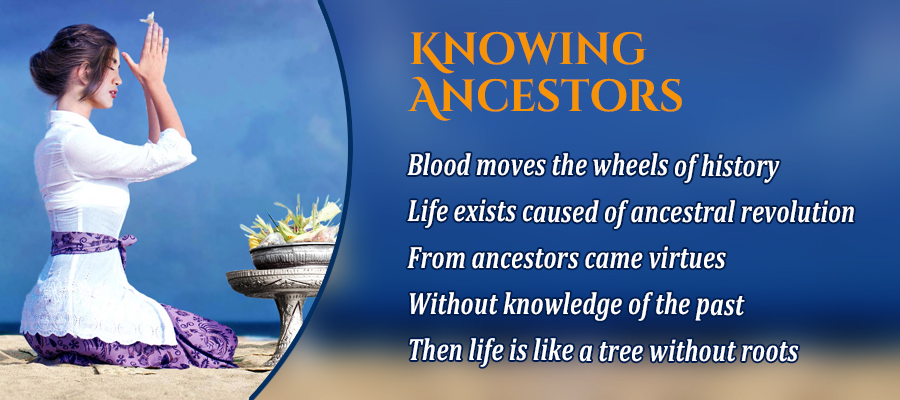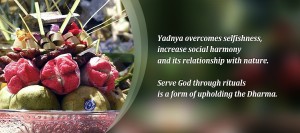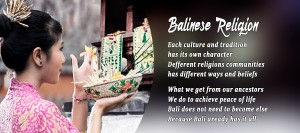- 1THE BALI SHRINES OF ANCESTORS
- 1..1STORIES AND RELATION TO BALI SHRINE
- 2Balinese people in the ancient periods of IX-XIV centuries
- 2..1The Rituals of the Dead of Balinese People
- 2..2Rituals of Purifying the Nature (Environment)
- 2..3Purification Ritual for Human
- 2..4Ritual of Worshipping the God and His Manifestations
- 2..4.11. Peneken / munggah
- 2..4.22. Kāryya/Rajakāryya
- 3Religious Offerings at the Balinese People
- 3..1Offerings of Dances, Songs, and Gamelan Orchestra
- 3..1.11. Daksina
- 3..1.22. Prayaścitta
- 3..2Offering of Cuisine in the Balinese People in the Ancient Periods
- 3..2.11. Kebo (buffalo)
- 3..2.22. Celeng (pig)
- 3..2.34. Syap/Hayam (chicken) and Itik (duck)
- 3..2.45. Ikan (Fish)
- 3..2.56. Beras (rice)
- 3..2.67. Sarwa wija (beans)
- 3..2.78. Mula phala(tubers)
- 3..2.89. Sarwa phala(fruits)
Honoring ancestors with altars, shrines, prayers and rituals is certainly not new. For many thousands of years, indigenous peoples across the globe have designated special spaces and places to express sacred connections to their roots.
It is only more recently that the practices of ancestor reverence have returned to our modern Western culture.
Some of this renewed interest is due to the growing popularity of Family Constellations, an unconventional healing process that examines our connections to our larger family system and helps us to feel the blessings of the ancestors rather than carry their burdens. Family Constellations were developed in Germany about 30 years ago by Bert Hellingerfor many years and learned their traditions of ancestor reverence.
The Balinese are still to this day very traditional. They wear ceremonial outfits every time there is a ceremony, which is practically every week and the offerings they put every day are to their ancestors.
One thing most foreigners will notice straight away is how devoted the Balinese are to their spiritual practices. Their ceremonies are sacred and they will take time off work to go to temple. Every single house they own needs to be blessed each morning, so they will come round and place offerings at the break of dawn.
They never get tired or miss doing an offering, but its not just that. Their spirituality can be seen deep inside them from the way they act and talk. They live in harmony with everything around them and see spiritual meanings behind every small act.
At the most private sphere of life are the individual family compounds where the Sanggah Kemulan ancestral shrines are located.
The house level represents the practice of ancestor worship at its smallest scope; only one family maintains its house shrines and the ancestors connected to them reflect recently deceased relatives who the family has a living memory of.
An understanding of these three levels of conceptual organization is not only important for an analysis of Bali ritual life, but its hierarchical division of ancestor shrines. As the series from house and village is followed the shrines become progressively more elaborate and the status of ancestors more sacred. With age comes sanctity.
THE BALI SHRINES OF ANCESTORS
Physical structures dedicated to ancestors represent an importance of kinship in Bali, but also the need for a medium of conversing with the deities. By having a shrine to focus one’s prayer and offerings, a division between the sacred and profane is enhanced and the presence of holy spaces made more visible.
Prayer within the courtyards of the “Sanggah” or the terraces of “Pura” require a “pakian adat”, the traditional Balinese ritual clothing and arguably a mindset of spiritual communication with the gods. With the Tripartite orientation system, a description of ancestor worship at each level will help as a basis for connecting architecture to origin histories.
Generally simple, one building structures, they are spread out across the many in clusters adjacent to the Pura complex. The theory across ancestral shrines is that one’s deceased family member can only attain deity status through detachment to their living descendants.
STORIES AND RELATION TO BALI SHRINE
Part of the life of a shrine is based on what is represents to the society and its situation within local history. Ancestral architecture not only implies that ancestors made a structure but that their present-day descendants worship them through them, using a shrine as a medium for communication.
Java had a strong influence in Bali, not only through the importation of Majapahit customs, but through geographical orientation as well. Each ancestral shrine has a story surrounding its history.
This ethnography of ancestral architecture in Bali provided me with insight on how physical shrines function within the conceptual framework of ancestor worship and kinship ties within the Bali community. Through divisions made at the house, village level, the Balinese have knowledge of their genealogical origins and understand that each domain is interrelated with another, creating a sense of common predecessors across the Bali region community.
Origin narratives play an important role in constructing local history and the fantastical nature of the founders of Bali. Through mention of architecture still standing in the Bali village today, stories gain credibility in connecting past and present through artifacts and archaeological remains.
With anthropological research pointing to an Austronesian past of Bali, overlapping characteristics in ancestor worship and the tracing of origins may be explained as a result of a common cultural heritage before the linguistic split.
Origin stories or myths can also demonstrate how migration patterns play a role in local history and belief of the original homeland of one’s ancestors. Not to be disqualified immediately as myth, it is instead worth the effort to understand discrepancies in origin stories and understand how the oral tradition has evolved over many generations, thus revising itself into the most plausible scenario.
It is similar to natural selection as seen through the oral tradition only the best, more believable qualities survive into the present day.
Balinese and Polynesian society have linguistic and genetic ties, factors which must have played a role in how local history and belief systems developed.
Exist in the present as living things, continuously adapting to new environments and adopting the ideas of outside influences, to ignore the similarities between two regions of the world would be to deny their participation in cultural exchange and label them as isolated examples.
Balinese people in the ancient periods of IX-XIV centuries
Balinese people in the ancient periods of IX-XIV centuries had uniqueness in performing the religious teachings they followed and they looked flexible in expressing the teachings. They followed different sects, but they did not leave believes they used to have before Hinduism and Buddhism arrived in Bali, that was worshipping the ancestors. The strong existence of worshiping the ancestors continues till today. The expressions of dedications to the God with all His manifestation and the ancestors of Balinese people in the ancient periods of IX-XI centuries have born various forms of offerings, such as carving art, architecture, dances, music orchestra, offerings, and various cuisines.
Sutaba (1980), in his book Prasejarah Bali, states that since prehistory period the populations inhabiting Bali Island have had high knowledge and comprehension on the “outerworld” beyond their own world that is believed to give influence to their lives. The evidences showing that Balinese people had believes in the prehistory period are (1) believes in the mountain and the ocean as the nature of the soul; (2) believes in real and unreal nature; (3) a belief that after death there is another life; and there is a belief in the soul of the ancestors that can help them. The believes developed till they followed Buddhism and Hinduism. The idea shows that religious lives of Balinese peoples are not fully the influence of Hinduism and Buddhism coming from outside Bali.
Semadi Astra (1997) states that the religious leaders having titles of dang acarya (Siwaism priest) and dang upadhyaya (Buddhism priest) have different roles. In their capacities of mpungkwing, the priests have authorities to present “religious services” to all people in the areas where they live. Besides that, they also have roles as teachers to the government. Their competences in literature enables them to be teachers outside religion, such as government structure, architecture, and art of arca. Their roles in the fields are not in practical forms, but only in their theories. Dividing system “the areas of religious services” are not absolute, they can be seen till today with adaptations with religion or sects they follow. Based on the data in the manuscript, Astra states that there were six sects growing Balinese people in the ancient periods of IX-XI centuries, they are (1) Śiwa, (2) Sogata (Buddha), (3) Rsi, (4) Mahabrahmana that identic by Brahmana, (5) Wesnawa, dan (6) Ganapatya (Astra, 2009: 24-29).
The opinions of the two experts actually can give pictures that Balinese people in the ancient periods of IX-XIV centuries had uniqueness in performing their religious teachings and looks flexible in appreciating them. In their positions as the followers of the sects, Balinese people in the ancient periods of IX-XIV centuries did not leave their belief they used to have before Hinduism and Buddhism came to Bali, the worship to the ancestors. The strong spirit of worshipping the ancestor continues till today. Below kinds of ritual carried out by the Balinese people in the ancient periods of IX-XIV centuries are described based on the data of the old manuscripts.
The Rituals of the Dead of Balinese People
Even though the souls of deceased person go to a certain place, but the relationship between the dead and the family or the community they left does not end at all. The soul is still considered as a protector and has influence on the social and economic lives of the people left behinds. Releasing the soul from the body requires help from the body requires help from its family through rituals for the dead, and through funeral efforts to accelerate soul’s journey to its destination.
Referring to ritual of the dead is pangambaligya found in the old manuscript Pandak Badung (993 Śaka/1071 Masehi) sheet IVa line 3-4 (Callenfels, 1926: 16), meanwhile the term atiwa-atiwā can be found in the old manuscripts of the periods of Jaya Pangus, one of them is Sukawana B (1103 Śaka/1181)sheet Va line 5 to sheet Vb line 1 issued by King Jayapangus and the term used is pepandem.
The terms basically have similar purposes to speed up releasing the soul and its journey to its destination.
Rituals of Purifying the Nature (Environment)
The use of environment by the Balinese People in the Ancient Periods gave positive and negative impacts. The impact might be seen at that time or later. Trees/forest, soil, and water are the three important elements in humans’ life. Soil is identical with Mother Gods or Pertiwi, that is considered to bear all things in the universe including the plantations or the trees needed by the human (Santiko, 1980:292: Suarbhawa, 2014: 314). Besides that, soil is considered to have religion magic with the human inhabiting on it. The water becomes the most important element in the fertility process.
Related to the purification ritual for the nature, it can be viewed again about the process of stipulating it called sima, that was often done in the periods of ancient Bali and ancient Jawa. Stipulating sima is a process of changing land status both in its processing and its use.
Sima means a piece of land with its borders determined for various kinds of purposes with processing systems different from before. The event of stipulating a land becoming sima especially related to day, month, and other schedules are usually recorded in detail in the old manuscripts. Even, some Javanese old manuscripts have processions of the rituals of stipulating sima in details. Different from the Balinese old manuscripts of IX-XIV centuries, till now it has not been known about the ritual. Nevertheless, based on the tradition existing till today in Bali, the ritual of shifting the land status is still there. One of the important processions of the ritual is called pecaruan/caru.
In the old manuscript of Bwahan E (1103 Śaka/1181) sheet IVb line 4 it is found that the term wastwasambhawotpata, that is an event or magic things believed by the people as the signs or the source of disaster. The magical events are like manak salah (people bearing baby with physical defect), animal bearing child in physical defect or in strange physical condition, earthquake, and banana tree having branch (-es). In the old manuscript it is also said that if strange things unexpected happens, so the people must perform patikel tanah at the price of 1 māsaka. If there is a disaster that is believed caused by the strange event, so the villagers must perform a purification ritual (caru prayas citta) for one day, in the day or in the evening.
Purification Ritual for Human
Purification ritual for human by using water as the media has been known since Bali ancient period of IX-XIV centuries or even since the period before it. Purification ritual for human is performed in spring, beach, and river for the purpose of purifying human physically.
The purification ritual for human particularly done especially by a king that is Paduka Sri Maharaja Saka Lendu Kirana Isana Guna Dharma Laksmi Dhara Wijayottungga Dewa is written in the old manuscript of Sawan C (1020 Śaka/1098) sheet IIIa. The citation states that “At the purification ritual for the king, that is every lunar eclipse and sun eclipse, must prepare rice fruits. At the ritual three ties of rice fruits are put on, all must be presented to Panumbul, not put on purih-purihan, not feeding Taruh Uluh every Magha month in the ninth big day”.
The purification ritual for human by Balinese people in this present time is called melukat. In the Hinduism philosophy, melukat is an activity of purifying for human from all bad things made by other people as well as by himself, done in both consciously or unconsciously or not in purpose, or in unclean feeling or dirty condition still attaching him.
The purpose of the purification is to release or be released from bad things attaching human and mind spiritually. The activity of purification with water has become parts of religious activities both in Java and in Bali. A very early written evidence found in Central Java related to the role of water in the religious life is the old manuscript of Tuk Mas. In Javanese Tuk means water (Kern,1917: 99, Poerbatjaraka, 1952 : 17).
The patirthan in numbers found in Java and in Bali were possibly not only used by the kings, noble people, priest, but also by all people by keeping attention to certain areas. In Sarasamuscaya sloka 284 it is stated that one who does not like to do purification, not fasting and not to do holy things with tirtha (holy water), he belongs to the poorest one. The citation stresses that the ritual of melukat is something that is obliged especially for the followers. Melukat is an activity of purifying soul and body with water or tirtha. Tirtha is water that is already blessed.
Related to the purification ritual in the old manuscript is also found a term of upakara (sesaji) called prayaścitta. Prayaścitta is one of offerings that is used in the purification ritual both for human (microcosms) and environment/nature (microcosms). When a disaster or an accident happens, besides performing purification for the environment/nature, the Balinese People also performed purification ritual for human called sinukṣma/panukṣma. The ritual is a form of gratefulness because they did not have any accident or disaster.
Ritual of Worshipping the God and His Manifestations
Below are some terms showing the existence of rituals worshipping the God and His manifestation.
1. Peneken / munggah
Peneken (ancient Balinese word) and munggah (ancient Javanese word) are the verbs meaning to leave up or to offer. They belong to active verbs meaning to offer to the God
(Hyang Api). It is the simplest expression in offering something to the God. Below is the citation of the old manuscript Sukawana AI (804 Saka/882) sheet IIb line 2-5 stating that “All cooking tools brought to live there, gold, silver, bronze, copper, followers, buffaloes, cows to be returned at the price of 4 masaka for the ritual of the dead and the rest of them will be used in the next ritual of the dead”.
2. Kāryya/Rajakāryya
Kāryya is an ancient Balinese word, as Granoka (1985:55) states, it means work, job as how it is used commonly or more specifically as the work related to rituals. The use of the word is now still relevant with the meaning of the word. In the ancient period of Bali in the IX-XIV centuries, the word meant a ritual performed at a holy place. The existence of the Kāryya/Rajakārya performed at Trunyan as stated in the ancient manuscript of Trunyan B (833 Śaka/911 Masehi).
Religious Offerings at the Balinese People
Statement about the simplest offering (banten) in holy Bhagawadgita IX 26 that said anyone who worships me with an offering of one leaf, one flower, one fruit, or a swallow of water, I will accept as an offering of dedication from someone of a holy heart. Based on the citation, it means that honesty becomes the success of an offering or yadnya.
The citation is also gained in Manawa Dharmasastra III.97 stating that offering to the God and the ancestor is done by people who do not know about the rule will be useless if they offer with their foolness giving their parts to Brahmana, their offering is not different from the dust.
Expressions of dedications to the God, all His manifestations, and the ancestors in Balinese people from ancient periods have born various forms of offerings, such as carving art, architecture, dances, songs, music orchestra, offering, and various forms of cuisine.
Below it is described about the offerings done by in the Balinese people in the ancient periods.
Offerings of Dances, Songs, and Gamelan Orchestra
Old manuscript mentions that demand for doing entertainment is more motivated by rituals or as an offering, some of them are the Bebetin AI (818 Śaka/896 Masehi), PrasaatiTrunyan AI (891 Śaka/891Masehi) and Prasasti Trunyan B (833 Śaka/911 Masehi).
Below is the citation of Bebetin AI sheet IIb line 5 stating that “musicians, singers, bamboo angklung players, drummers, flute blowers, mask dancer, puppet master are offered at Hyang Api” (Goris, 1954 : 55)
The entertainment meant in the old manuscript is gamelan music orchestra (karawitan), musician (juru gambel), drummers (juru kendang), flute blower (juru suling), music of angklung, dance of topeng, puppet show, and literary art (singers of mebebasan).
Based on the old manuscript, almost all entertainments are used to complete religious rituals. As stated in Bebetin AI, entertainment is presented to Hyang Api and in the old manuscript of Trunyan Ai and Trunyan BI it is offered to the God at Trunyan. It means that when there is a religious ritual for Him worshipped as Hyang Api and the God at Trunyan, it presented entertainment of mask followed by music and puppet show.
Offering of Bebantenan / Mahabanten
Bebantenan is plural form of banten that is one of the forms of yantra (meaningful symbols).
In the ancient Balinesemanuscripts it is mentioned with a term mahabanten (big offering) especially in the period of King Jayapangus.
Banten has an essential and universal meanings but its forms are very local. There are some names of banten found in the old manuscript of Bali, as the following.
1. Daksina
Symbolically, daksina is the place (seat) of the God of Ida Sang Hyang Widhi. Daksina is one of the important elements in every offering or bebantenan both in its simplest to the supisticated forms. Daksina consists of : (1) one black pangi fruit as the symbol of petala, the underworld ruled by the God of Visnu and the symbol of water, (2) one coconut representing jana pada, the middle world ruled by the God of Brahma and the symbol of fire, (3) one white egg as the symbol of swah loka ruled by Iswara, (4) a pinch of rice (bija) as the symbol of prosperity. The old manuscript Bwahan E (1103 Śaka /1181 Masehi) issued by King jayapangus is one of the ancient manuscripts mentioning daksina as written on sheet IVb line 4-5 stating that and if there is waswasambhawotpata at the village, in order that they give patikel tanah masaka, if in bad result, in order that they hold caru prayascita (purification ritual) in one day time, day and night, not charged with daksina and matan hyang, not charged with any offering.
2. Prayaścitta
Besides daksina, in the citation of the Prasasti Bwahan E (1103 Śaka/1181 Masehi) sheet IVb line 4-5 also mentions that the kind of banten called prayaścitta. Prayaścitta comes from the words ‘prayas’ and ‘citta’ belonging to Sanscrit. Prayaśmeans happy or glad, meanwhile citta means holy and neutral mind. So, prayaścitta can mean an offering for purifying mind in order to get glader feeling after experiencing sorrow or disaster. The most element in prayaścitta is the holy water and the young yellow coconut water.
Offering of Cuisine in the Balinese People in the Ancient Periods
Below is the description of cuisine made as sesaji (offering) in the ancient periods.
1. Kebo (buffalo)
Buffalo has been used as an offering of animal in the form of caru, as written in the ancient manuscript of Dawan (975 Śaka/1053 Masehi) sheet IIa line 3-6 stating that :“They are released from obligation to offer 1 buffalo at the price of 6 masaka for sacrifice offering (pacarwa) for the God. If there is not any buffalo, it can be replaced with silver at the price of the buffalo as stipulated by the majesty in order that it can be offered every month Asuji on the date of 13 bright paro followed by consciousness because it is meant as the protecting means for Sanghyang Dharma in Anta kunjara pada”. The citation shows that how important buffalo for the offering, if people cannot offer it, they are allowed to replace it with silver at the price of the animal.
2. Celeng (pig)
In the ancient manuscript of Sembiran AIII (938 Śaka/1016Masehi) it is mentioned that the villagers of Julah offer pig (celeng) at the price of 4 masaka at the holy place of Julah. The statement is written in the sheet VIIIa line 5 and IXa line 6 said that “aceleng ngamulya ma 4”, meaning that a pig at the price of 4 masaka.
3. Wdus (Goat)
The villagers of Bwahan are obliged to offer a goat at the ceremony of Bhatara Kanakantaralaya every month of Kartika, sukla paksa on the 7th day. The statement is explained as the following citation of the old manuscript. It states that “The obligation is to offer a male goat at the price of 1 maska 1 kepeng and others, and 6 sukat of rice, in order to be offered at the ceremony of Bhatara in Kanakantaralaya every month of Kartika, sukla paksa on the 7th day.
4. Syap/Hayam (chicken) and Itik (duck)
The offering of chicken and duck is not mentioned clearly in any old manuscripts found, nevertheless, it cannot be denied that these animals may be used as offerings when it is compared to the condition of Balinese in the present time.
5. Ikan (Fish)
The ancient manuscripts showing the use of fish as the offering is the ancient manuscripts Trunyan AI (891 Śaka/813 Masehi) on sheet IIb line 2, Trunyan B (833 Śaka/911 Masehi) on sheet IIb line 4, Bwahan A (916 Śaka/994 Masehi) on sheet III line 10-11 and sheet IV line 1-2, Batur, Pura Tuluk byu A (933 Śaka/1011 Masehi) on sheet IVa line 4 and Bwahan E (1103 Śaka/1146 Masehi) on sheet IIa line 4 and sheet IIIa line 5.
The kinds of fish caught in the lake were simbur (fresh water fish) or dleg (a kind of freshwater catfish), nalyan (a kind of fresh water with white scales), kuyur (freash water fish living in the lake), kuluma (a kind of lake fish).
Besides for consumption, the fishes are also used for sangker tahun ritual and as haywahayuwan, as cited from the ancient manuscript Trunyan AI (891 Śaka/813 Masehi) sheet IIb line 1 stating that : “The obligation is at the ritual in the month of Magha on the 99 days (those are) 5 simbur fish, 20 fishes wrapped in banana leaf, 2 dry gunja fishes to Pacaksu offered 2 simbur fishes, 10 fishes wrapped in banana leaf, 1 dry gunja fish and water to do self-purification from dirt/sin, if there is any purchase for Him, the one having duty is given 2 kepeng of silver on the ninth day of Magha month”.
6. Beras (rice)
Rice is one of the staple food produced by the Balinese People in the Ancient Periods of IX-XI Centuries. Beside the white rice, the red one (laktanbang) and the black one (laktanireng/injin) are also used for offerings as stated in the ancient manuscript of Pandak Bandung (993 Śaka/1071)sheet IIa line 3-5 stating : “in order not to neglect the obligation to offer to the God, they are 3 sukatof rice, 3 sukatof red rice, 3 sukat of black rice as the caru in the ritual for the God every month Asuji and every month Cetra bright paro”.
7. Sarwa wija (beans)
Information about offering of beans (sarawija) was gained from the Ancient manuscript of Pengotan (911 Śaka/989 Masehi) stating that people performing bwathaji(social work) at Silihan and Kundungan released for not offering sarwawijato Nayakan. In the sheet Iva line 3 of the manuscript it is stated that “kapwa tan knasarwawija”, meaning that they are not obliged to offer beans. The beans are still used till now as the part of offering by Balinese people.
8. Mula phala(tubers)
Onion and garlic are needed badly as offering. As done by the villagers of Sukhapura every the 1st date (pratipanten) suklapaksa, month asuji, they are obliged to do offering when there is a ritual of BhataraSanghyang. The kinds of tubers used are yams and caladium as stated in the ancient manuscript of Sangsit A or Blantih A (980Śaka/1058 Masehi) on sheet Vb.
9. Sarwa phala(fruits)
Various kinds of sarwaphala(fruits) written in the ancient manuscript are such as nyu/tirisan (coconut), pisang/byu (banana), kamiri (candlenut), pucang (areca nut), jirk/jeruk (orange), kapulaga (kapulaga), katumbar (corlander), wungkudu (morinda), kasumba (kasumba), dan hano (sugar palm) were grown and used as offerings in the ancient period of Bali. The ancient manuscripts of Dawan (975 Śaka/1053 Masehi), Sangsit A or Blantih A (980 Śaka/1058 Masehi), Sembiran AIII (938 SŚaka/1016 Masehi). The Sangsit A or Blantih A states that nothing given will damage (do bad things), robbing (and) in order not to take all things forbidden by the villagers (of Sukhapura) as the fruits.





